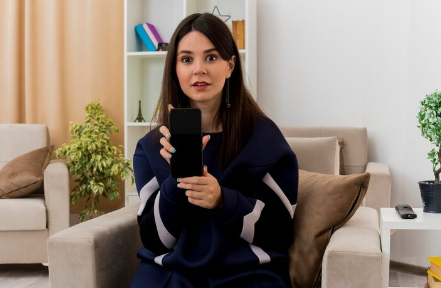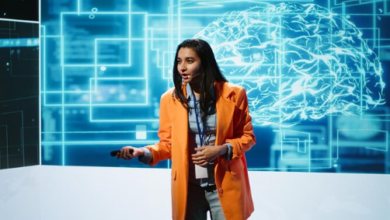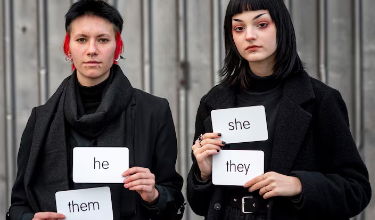Aishwarya Rai Bachchan: The Truth Behind Viral Fake Videos and Online Rumors

In the age of instant sharing and viral media, even the most respected public figures can become victims of misinformation. Over the years, Aishwarya Rai Bachchan, one of India’s most admired actors and global icons, has faced numerous online rumors and manipulated videos falsely attributed to her. These pieces of fabricated content often spread rapidly across social media, misleading audiences and violating personal privacy. In this article, we explore how such rumors start, why they gain traction, and what individuals and platforms can do to combat misinformation and protect digital dignity.
1. The Rise of Online Fake Content and Celebrity Targeting
The digital landscape has made it easier than ever to create, edit, and share multimedia content. While this technological progress has empowered creators, it has also given rise to a darker trend — the manipulation of celebrity images and videos. High-profile personalities like Aishwarya Rai Bachchan are frequently targeted because their fame guarantees attention. Such content is often created using deepfake technology or digital editing tools to fabricate scenes that never occurred. Unfortunately, once such false material is uploaded, it spreads faster than the truth, harming reputations and fueling baseless speculation.
2. Aishwarya Rai Bachchan’s Global Reputation and Cultural Impact
Aishwarya Rai Bachchan is not only a celebrated Bollywood actor but also a former Miss World and a global ambassador for Indian cinema. Her influence extends beyond entertainment — she is recognized for humanitarian work, elegance, and professionalism. That is why associating her name with inappropriate or falsified material is not only disrespectful but also misleading. Audiences around the world admire her for her achievements and social presence, yet online misinformation often tries to undermine that image. Recognizing the gap between verified facts and online gossip is crucial in maintaining her legacy of dignity and excellence.
3. Understanding the Deepfake Problem
Deepfakes — AI-generated videos that mimic real people’s appearances — have become increasingly realistic. These technologies can swap faces, manipulate expressions, and even synchronize voices. When used unethically, they become tools for defamation or harassment. In Aishwarya Rai Bachchan’s case, several alleged “clips” circulating online have been proven to be digitally altered deepfakes. Such content violates not only moral boundaries but also legal ones, as defamation and digital impersonation are punishable under cybersecurity laws. It’s vital that audiences learn to spot fake content and avoid amplifying it.
4. The Role of Social Media Platforms and Public Awareness
Social media sites like X (formerly Twitter), Facebook, and YouTube bear a shared responsibility to curb the spread of false material. With billions of uploads daily, moderation is challenging — yet automated flagging and user reporting systems can help reduce the visibility of harmful videos. Public awareness also plays a huge role: every user has the power to verify information before sharing. Following verified accounts, checking official news sources, and using reverse-image search tools can help identify fake content and protect people’s reputations.
5. Why Respecting Celebrity Privacy Matters
Celebrities are public figures, but they are also human beings entitled to privacy, dignity, and respect. Rumors and explicit deepfakes cross that line, turning curiosity into digital harassment. Aishwarya Rai Bachchan has maintained a strong stance on professionalism and privacy throughout her career, rarely responding to false allegations — a dignified example of restraint in the face of online negativity. As responsible users, we should support such integrity by refusing to engage with unverified or sensationalist posts and instead promoting authentic, ethical media consumption.
Conclusion
The case of Aishwarya Rai Bachchan and similar incidents remind us of a critical lesson: the internet can empower truth or spread lies, depending on how we use it. As deepfake technology and online manipulation grow more sophisticated, our responsibility to verify, respect, and think critically grows even greater. Defending a person’s dignity — celebrity or not — begins with digital empathy and awareness. By refusing to share false content and supporting responsible journalism, we contribute to a safer, more respectful online world.
FAQ
1. Has Aishwarya Rai Bachchan ever appeared in explicit content online?
No. All such materials circulating under her name are fake or manipulated. They have been widely debunked and reported by multiple fact-checking outlets.
2. What are deepfakes, and why are they dangerous?
Deepfakes are AI-generated videos or images that make it look like someone said or did something they never did. They can damage reputations, spread misinformation, and violate privacy laws.
3. How can I verify whether a viral celebrity video is real or fake?
You can use tools like Google Reverse Image Search, InVID, or TinEye, and check credible news outlets or official social-media handles for confirmation.
4. Are there legal protections against fake videos in India?
Yes. Under India’s Information Technology Act and defamation laws, creating or sharing false and defamatory material can lead to legal penalties, including fines and imprisonment.
5. How can fans help protect their favorite celebrities online?
Fans can play a vital role by reporting fake content, refusing to share harmful links, and spreading awareness about responsible online behavior.



